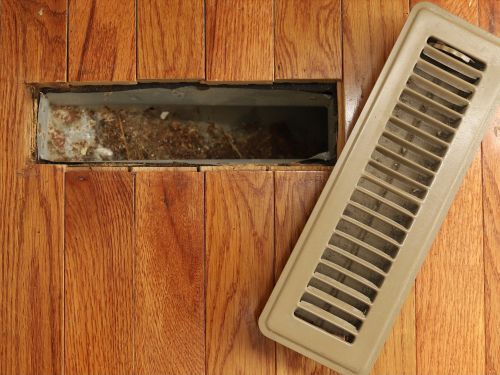How to Identify if there are Pests in Your Air Ducts
Rodents and pests can cause serious problems when they invade your home’s air ducts. Because air ducts provide dark, sheltered, and temperature-controlled spaces, they are ideal hiding places for mice, rats, insects, and even small wildlife. Unfortunately, pest intrusion doesn’t just damage your HVAC system—it can also affect your home’s indoor air quality, spread harmful bacteria, and create unpleasant odors throughout your living space.
Understanding the signs of rodent or pest intrusion in air ducts helps homeowners take early action to protect their HVAC systems and prevent further infestation. Here’s what to look for and when it’s time to call the professionals at Better Air Northwest.


Unusual or Foul Odors Coming From Vents
One of the most common signs of pest intrusion is unexplained odors coming from your vents. These may include:
- Ammonia-like smells from rodent urine
- Rotting or decaying odors from dead pests
- Musky or earthy smells from nests and droppings
Because your HVAC system circulates air throughout the home, odors originating in the ductwork can quickly spread to every room.
Droppings or Debris Around Vents
Rodent droppings are a clear indication of pest activity. If you notice small, dark pellets near air registers, return vents, or on top of the furnace, rodents may be using the ducts as pathways or nesting areas.
Insects leave traces too—such as termite dust, cockroach shells, or spider webs—around vents and inside duct openings.
Why This Matters
- Droppings spread bacteria, viruses, and allergens.
- Pest debris can contaminate indoor air.
- Nesting materials inside ducts can restrict airflow.
Scratching, Scurrying, or Movement Sounds
Hearing noises behind walls, in the ceiling, or inside vents is a major warning sign of rodent intrusion. Common sounds include:
- Scratching
- Scurrying
- Light tapping
- Chewing or gnawing
These sounds often occur at night when rodents are most active. If noises seem to travel across duct lines, rodents may be using your HVAC system as transportation routes.
Visible Chew Marks or Damaged Ductwork
Rodents need to gnaw constantly to wear down their teeth. This leads them to chew through:
- Flexible ductwork
- Insulation
- Plastic or rubber HVAC components
- Wires (a major fire hazard)
Inspect around accessible duct areas and attic or basement spaces for chew marks or ripped insulation. Damaged ducts can reduce HVAC efficiency and spread contaminated air throughout the home.
Increased Allergy Symptoms or Respiratory Irritation
Pest contamination can worsen indoor air quality. If anyone in your home experiences:
- Sneezing
- Itchy eyes
- Respiratory irritation
- Asthma flare-ups
Especially when the HVAC system runs, rodents or insects in the ducts may be the cause.
Pest droppings, hair, and nesting materials easily become airborne and circulate through the home.
Excessive Dust or Debris Blowing From Vents
If you notice unusual dust, insulation fibers, seed shells, or small debris blowing from your vents, rodents may be disturbing duct surfaces or pulling in nesting materials from outside.
Excess debris can clog air filters, strain your HVAC system, and create fire hazards.
Grease Marks or Smudge Trails Near Vents
Rats and mice often leave dark, greasy smudge marks along surfaces they frequently travel. These marks appear when the oils in their fur rub against walls, duct openings, and vent covers.
If you see streaks or greasy trails along your HVAC registers, rodents may be slipping in and out of the duct network.
Need to Have Your Air Ducts Cleaned?
When to Call a Professional
Rodent and pest infestation inside ductwork is not a DIY problem. You should call a professional immediately if:
- You see droppings or chew marks
- You hear scratching or movement in the ducts
- You smell strong or persistent odors from vents
- You suspect contamination of your HVAC system
Professionals can provide:
- Pest removal and sealing of entry points
- Sanitation and deodorizing treatments
- Air duct cleaning to remove droppings and nesting debris
- Inspection for damage to duct lines and HVAC components
Leaving pests in your ducts can result in health risks, system damage, and costly repairs, so acting quickly is essential.
Protect Your Home—Schedule a Professional Duct Inspection Today
Rodents and pests inside your air ducts can compromise your indoor air quality, damage your HVAC system, and pose health risks to your family. By recognizing the early signs of intrusion and contacting professionals promptly, you can prevent long-term problems and maintain a cleaner, healthier home.
If you’ve noticed odd smells, noises, or signs of pests around your vents, don’t wait—contact Better Air Northwest, as well as a pest control specialist, today to ensure your system is clean, safe, and fully restored.

